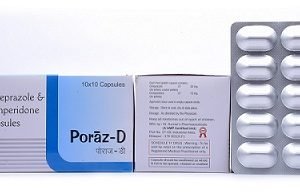Description
ACEBROPHYLLINE BELONGS TO CATEGORY OF DRUG GROUPS PRIMARILY AFFECTING THE RESPIRATORY SYSTEM DRUGS. ACEBROPHYLLINE IS A TYPE OF ALKALOIDS AND IT USED TO TREAT COPD. ACEBROPHYLLINE IS AN AIR WAY MUCUS REGULATOR WITH ANTI-INFLAMMATORY ACTION.
ACEBROPHYLLINE HAS 3 ACTIONS NAMELY BRONCHODILATION, MUCOREGULATION & ANTI-INFLAMMATORY ACTION.
PHARMACOLOGY
A.)PHARMACODYNAMICS:
Acebrophylline inhibits intracellular phosphodiesterase associated significantly reduce the airway inflammation and obstruction in chronic stages. Acebrophylline increases the synthesis and release of alveolar surfactant, resulting in triple action: mucoregulation, stimulation of bronchoalveolar clearance, and anti-inflammatory-antireactive effect. In patients with chronic obstructive bronchitis, given the drug for 10-20 days, there was a good reduction in expectorate Viscosity.with cAMP levels and facilitates bronchial muscles relaxation. Acebrophylline selectively inhibits phosphatidylcholine and phospholipase A, TNF-alpha and leukotrienes. Inhibition of such pro-inflammatory mediators can.
B.)PHARMACOKINETICS:
Absorption: – 200mg oral acebrophylline, the two components of the molecule ambroxol and theophylline-7-acetic acid are released in the stomach and absorbed in the intestine, reaching optimal concentrations of ambroxol within 2hrs and of theophylline-7-acetic acid after 1 hr.
Half-Life: – The plasma half life varies from 4 to 9 hrs after oral administration.
Metabolism: – The drug is metabolized in the liver and eliminated renally.
Indications
Treatment of adult patients with COPD and bronchial asthma.














